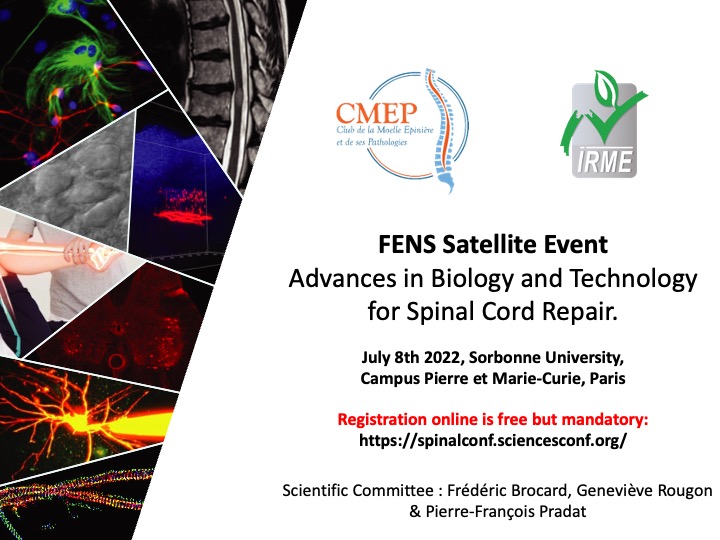|
Home Spinal cord injury (SCI) is a devastating condition and a challenge for every health system and society. While a cure that could repair the injured spinal cord is unforeseeable, recent advances in biological and engineering strategies have opened promising ways for improving functions after spinal cord injury. Advances have occurred not only in areas such as axon regeneration, inflammation, scar formation and grafts of cells but also in the identification of mechanisms underlying circuit reorganization, spasticity and recovery occurring after injury. These new findings have helped our understanding of requirements for restoration of function and treatment of spasticity. Biological approaches to restoring connectivity across lesions are focused on stimulating endogenous axon regrowth to re-establish communication through new relay circuits. In this context, biomaterials also hold promise as they can for instance provide oriented scaffolds and/or temporally deliver agents promoting axon regrowth. In parallel, advances in engineering have led to the emergence of “neuroprosthetics” with wearable and implantable neurotechnologies to enable or stimulate function. Presently, current promising strategies capitalize on the intrinsic capacity of spare circuits to produce movement and their ability to reorganize with training to boost recovery. It is well accepted that repeated activation of the sensory motor system increases activity-dependent plasticity of spare circuits. Consequently, neurotechnologies have been developed to augment activity thus plasticity such as electrical stimulation or magnetic stimulation. There is also a surge of interest in the development of spinal cord stimulation technologies aiming to stimulate the proprioceptive fibers in the posterior roots using spatially selective electrode configuration thus providing access to the pre-motor and motoneurons embedded in the segment innervated by this root. In the future biological and engineering strategies may interact and synergize but understanding complex mechanisms at play and defining temporal windows to apply them necessitate further studies. To stay up to date with some of these latest advances and foster synergies between clinicians and fundamental scientists the French "Club de la Moelle épinière et ses pathologies” (CMEP) together with IRME (Institut de Recherche pour la Moelle épinière) organizes on July 8th, 2022 a one day meeting entitled “Advances in biology and technology for spinal cord repair”. This meeting will be held in Paris (Jussieu campus) as a satellite meeting of the European FENS meeting (9-13 July). We hope to welcome both scientists and clinicians as well as companies and patients. Note that the meeting will be wheelchair-accessible. Attendance is free but registration is mandatory: Deadline: June 6, 2022 Registration (online) : https://spinalconf.sciencesconf.org/ Information : frederic.brocard@univ-amu.fr; genevieve.rougon@univ-amu.fr; irme@orange.fr |
| Online user: 2 | Privacy |

|

